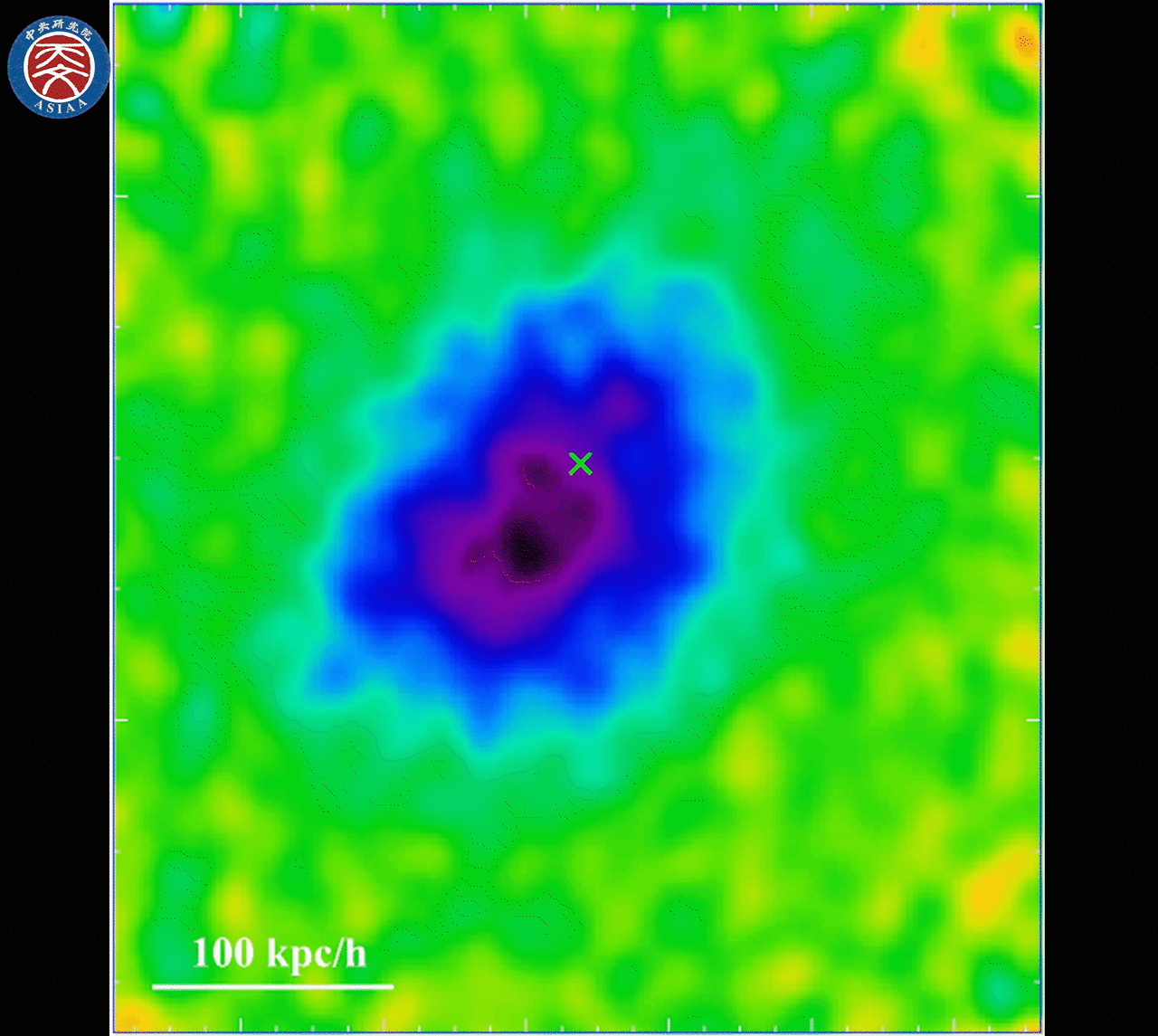Chandra and ALMA measure speed of sloshing gas in galaxy cluster

Almost all galaxy clusters experience mergers. While a merger takes place, a specific spiral pattern can often be observed in X-ray images. Such a spiral feature is due to the motion of the sloshing gas induced by a merger. Observing a phenomenon similar to sloshing gas in the daily life is easy: When you swirl a wine glass containing liquid, you will see how the water rotates along with the glass. Discovering how fast the sloshing gas moves in galaxy clusters has profound astronomical meaning and therefore is of great interest to astronomers. A group of researchers from Taiwan and Japan has now measured it using a novel technique.
The lead researcher of the study, Dr. Shutaro Ueda from the Academia Sinica Institute of Astronomy and Astrophysics (ASIAA), says, "Mergers are the most important factor in the evolution of galaxy clusters. So measuring the velocity of sloshing gas is crucial for understanding not only the origin of the motion but also the evolution of galaxy clusters. But our knowledge about the velocity of sloshing gas is very limited due to the difficulty of measurement. So far, only a few results are reported. Thanks to high-quality Chandra X-ray and ALMA images, we succeeded in developing a novel technique to solve the puzzle by combining both images and calculating the minor perturbations of the gas in a distant galaxy cluster."
Measuring the moving gas has always been important to astronomers because motion is not only a basic aspect in physics but also an important characteristic of astronomical objects. The motion of astronomical objects can directly tell us what has happened in the systems. Therefore, measuring the motion is an important step toward the origins, dominating mechanisms, and the nature of the astronomical object.
In the case of galaxy clusters, many kinds of features that indicate motion of the intra-cluster medium are found. They are considered to be associated with the evolution of galaxy clusters. It is, however, hard to measure the motion of the intra-cluster medium in galaxy clusters due to the energy resolution of X-ray CCD cameras. So knowledge of the velocity field was limited to only a few samples out of hundreds of galaxy clusters—even though a number of observations have been done in the past two decades.
In addition, the measurements were restricted to the line-of-sight velocity of the intra-cluster medium, because only the Doppler effect on emission lines of highly ionized iron can be used to measure the velocity in X-rays. Recently, a new method has been proposed to measure the velocity field by focusing on the perturbation in X-ray images, but the study based on this method is limited so far. Therefore, measuring the motion of the intra-cluster medium is still one of the hottest topics, and its velocity is one of the most important physical quantities for understanding the nature of galaxy clusters.
The authors of this paper decided to measure the velocity in a luminous X-ray galaxy cluster RX J1347.5-1145 by Chandra and ALMA. Dr. Ueda added: "Of course, we need to use Chandra X-ray Observatory and ALMA, because only these two provide us with the high-angular resolution that observing distant galaxy clusters requires. The objects are so tiny on the sky."
The second author of this paper, Prof. Tetsu Kitayama at Toho University, says, "We estimated the velocity of the gas in a distant galaxy cluster by combining X-ray observation and the Sunyaev-Zel'dovich effect (SZE) data, and by solving the equation of state. In the end, we obtained direct observational evidence for the subsonic nature of the sloshing motion in a galaxy cluster 4.8 billion years away from the Earth. This means that the sloshing motion is rather gentle and nearly in pressure equilibrium. We expect that such measurements will become possible for a large number of galaxy clusters once the new ALMA Band 1 receivers, now being constructed under the leadership of ASIAA, are completed."
Dr. Keiichi Umetsu, a well-known cosmologist and a research fellow of ASIAA, says, "Understanding the physical state of galaxy clusters and their level of equilibrium is essential not only for the physics of galaxy clusters, but also for studies of cosmology, as they are the most massive objects to have formed in the universe. This study offers a new window into the velocity field of the gas in galaxy clusters. From now on, the novel technique developed by the team can add a new dimension of observable for astronomers to explore the nature and evolution of galaxy clusters."
More information: Shutaro Ueda et al. A Cool Core Disturbed: Observational Evidence for the Coexistence of Subsonic Sloshing Gas and Stripped Shock-heated Gas around the Core of RX J1347.5–1145, The Astrophysical Journal (2018). DOI: 10.3847/1538-4357/aadd9d
Preprint: arxiv.org/abs/1808.09232
Journal information: Astrophysical Journal
Provided by Institute of Astrophysics and Astronomy





















